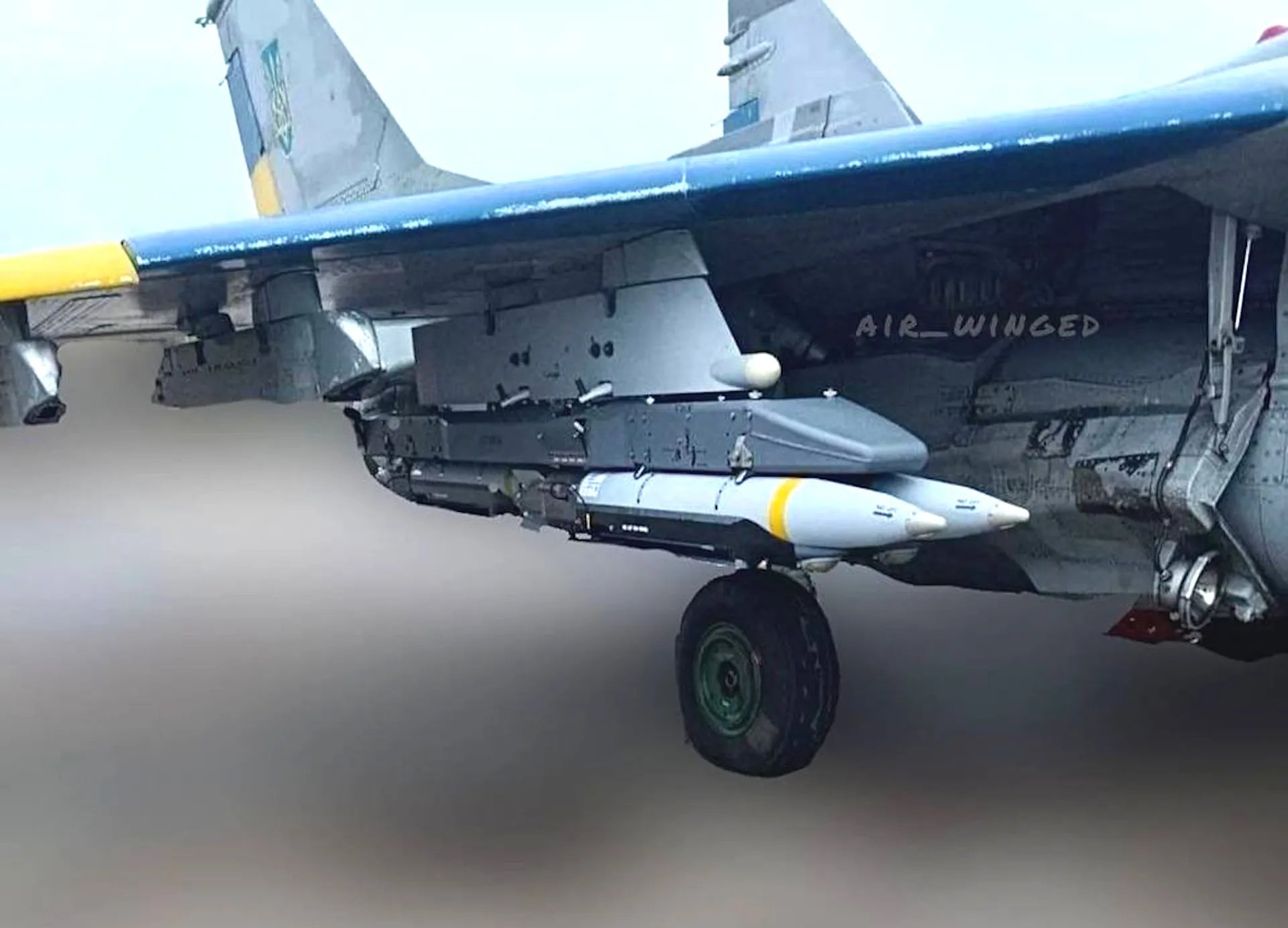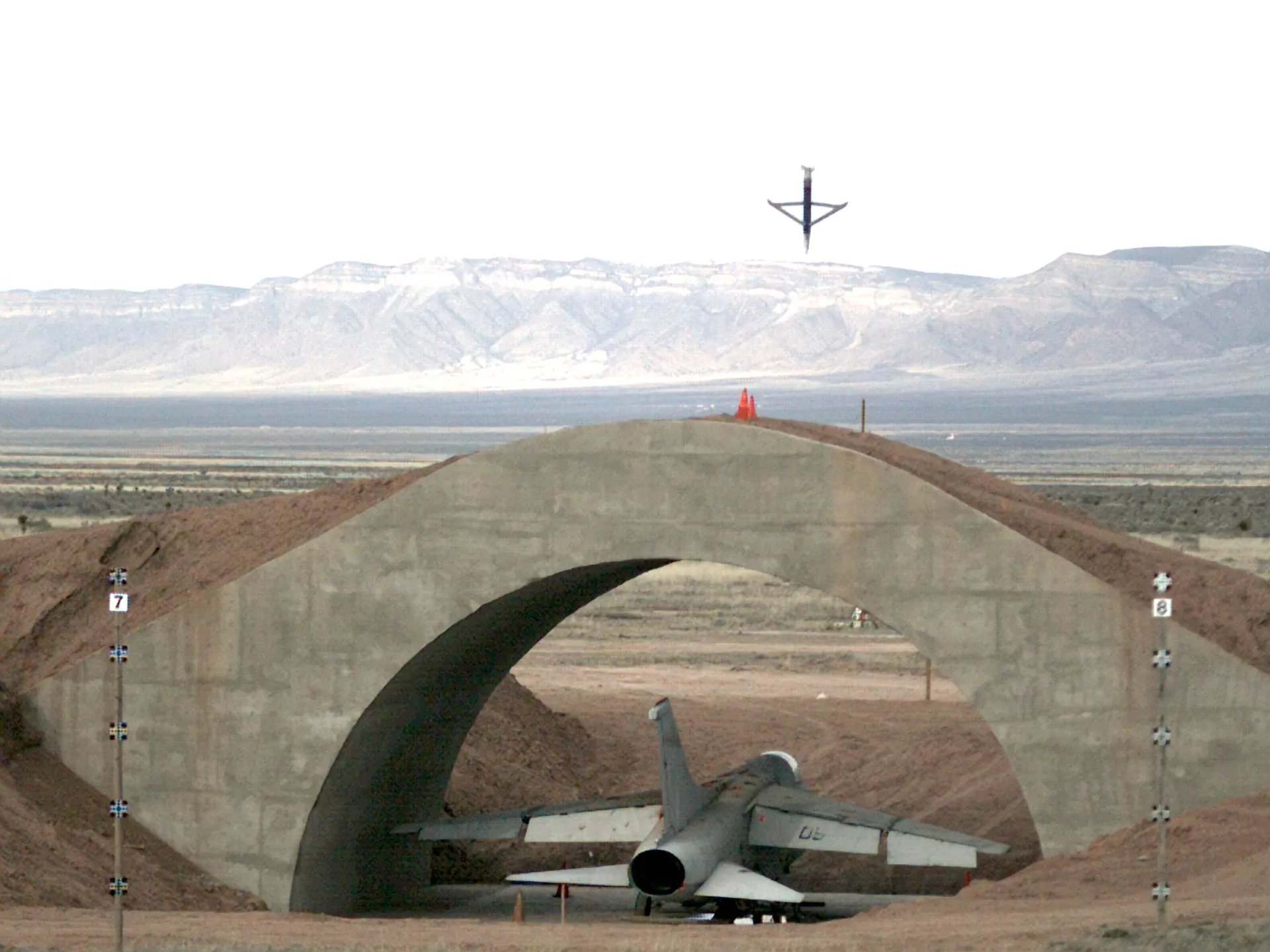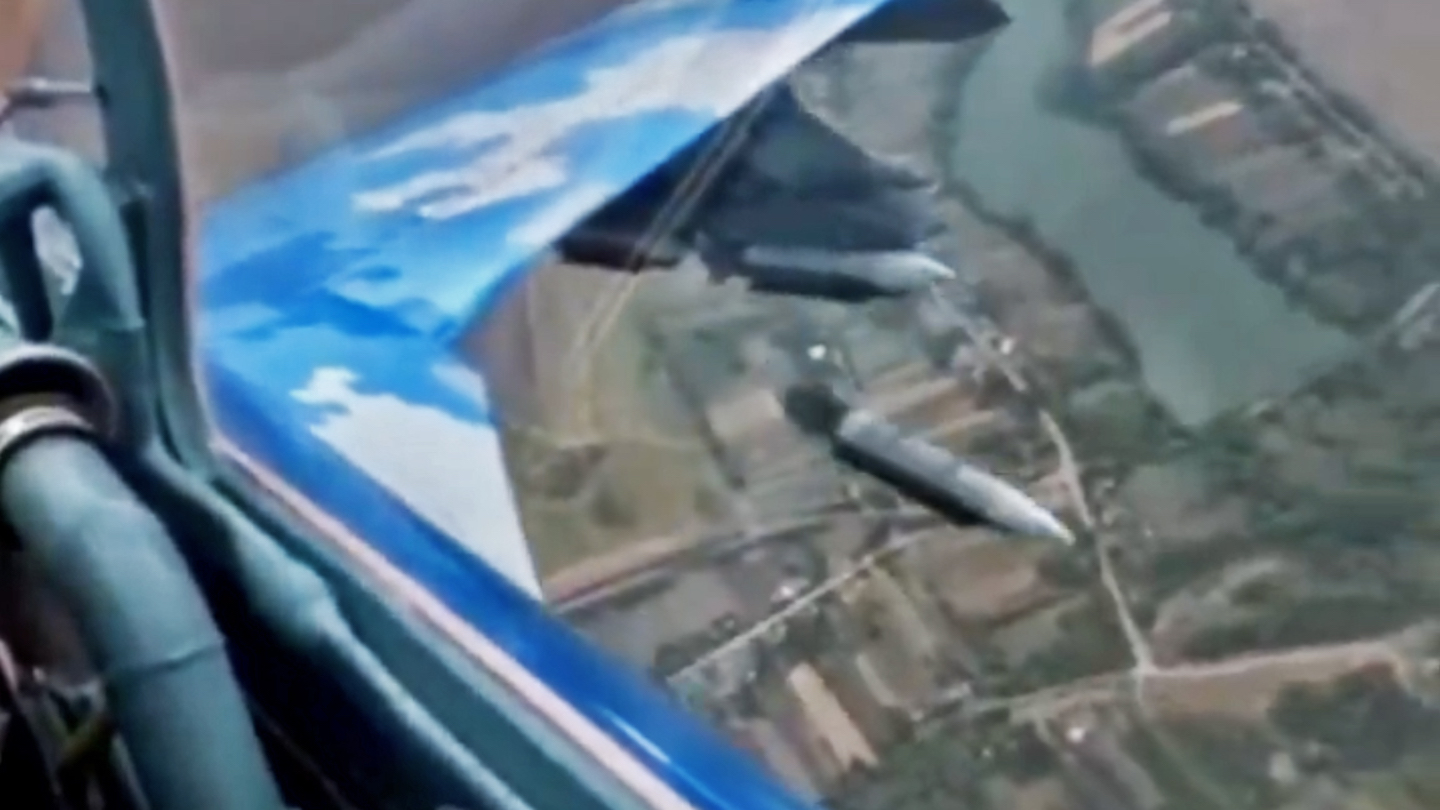A recently released video from the cockpit of a Ukrainian Air Force Su-27 Flanker provides an unprecedented close-quarters view of the fighter lobbing a salvo of GBU-39/B Small Diameter Bombs (SDB) toward a Russian target. The U.S.-supplied weapon is part of an armory of Western precision-guided munitions integrated on the Soviet-era Su-27, others including the AGM-88 High-speed Anti-Radiation Missile, or HARM, and the Joint Direct Attack Munition–Extended Range, or JDAM-ER.
The footage shows the Su-27 — painted in a ‘digital’ camouflage scheme — launching a salvo of four of the U.S.-supplied glide bombs, while in a climb, at an angle of around 60 degrees. This maneuver has the effect of increasing the standoff range of the weapon while helping to keep the launching aircraft exposed to air defense threats for a minimal amount of time. It’s something that we’ve come to see regularly over the battlefield, performed by fixed-wing tactical jets and helicopters.
An accompanying video purports to show the impacts of the munitions, although it cannot be verified that these are the results of the same engagement.
While Ukrainian Su-27s have been employing SDBs in combat for some time, they have only rarely been seen with the weapons attached, using the BRU-61/A rack, designed to hold up to four of these 250-pound-class weapons.
More often, these munitions are seen in combination with Ukrainian Air Force MiG-29 Fulcrum fighters, which have been noted using SDBs since earlier this year.
In previous images of MiG-29s carrying SDBs, we’ve also been able to observe a special pylon with what may be a white-colored antenna or sensor, mounted at the front. The pylon to which the BRU-61/A rack is attached on the Su-27 in the latest video has this or a similar feature, but with a darker color. In the past, we surmised that this could be connected with an electronic countermeasures system, seen in the photo below, which you can read more about in this previous feature.


The Ukrainian military first disclosed it had begun employing air-launched SDBs in May.
In terms of integration of the weapon, the SDB, in common with other Western missiles and precision-guided bombs, is combined with an iPad, or similar tablets-like device, mounted in the cockpit to actually employ the weapon.
In addition to SDBs and the JDAM-ER, Ukraine’s glide-bomb arsenal includes French-made rocket-assisted AASM-250 Hammers, which you can read more about here.
Ukraine’s use of the SDB, as well as other Western standoff precision weapons, mirrors Russia’s extensive employment of glide bombs of various types. While Russian standoff bombs have been a particular problem for Ukrainian air defenses, recent reports suggest that their effectiveness has started to drop off.

According to the General Staff of the Ukrainian Armed Forces, Russian attacks against Ukraine using guided aerial bombs have fallen by half, since Western partners allowed Kyiv to strike targets deep within Russia using long-range missiles. As a result, Russian tactical airpower has increasingly been pushed back to bases further from the front lines, impacting maintenance, sortie rates, and flight hours, which in turn reduced the number of sorties of this kind.
As for the SDB, this continues to provide Ukraine with a powerful tool for attacking targets at standoff ranges of up to around 46 miles with high accuracy. In the scenario shown in the video, with a pop-up launch at lower altitude, the range would be much reduced.
Reports from Ukraine suggest the SDB is considered an especially useful weapon due to its small size, which makes it much harder for Russian air defenses to deal with. At the same time, individual aircraft can be loaded with multiple SDBs, allowing more targets to be struck per sortie — as in the latest video.
Earlier reports suggested that the SDB has also proven notably resilient to jamming. According to an article in The Washington Post earlier this year, citing confidential internal Ukrainian assessments, “nearly 90 percent of dropped [Small Diameter Bombs] struck their target.”

The bombs are designed to penetrate semi-hardened static targets. They have been tasked heavily in support of the Kursk operation, especially for destroying bridges, including temporary ones.
Another major advantage is the significant stocks of the weapon held by NATO allies.
With that in mind, more insights into the Ukrainian Air Force’s operations with the Small Diameter Bomb, used by both the MiG-29 and Su-27, may well emerge in the future.
Contact the author: thomas@thewarzone.com
